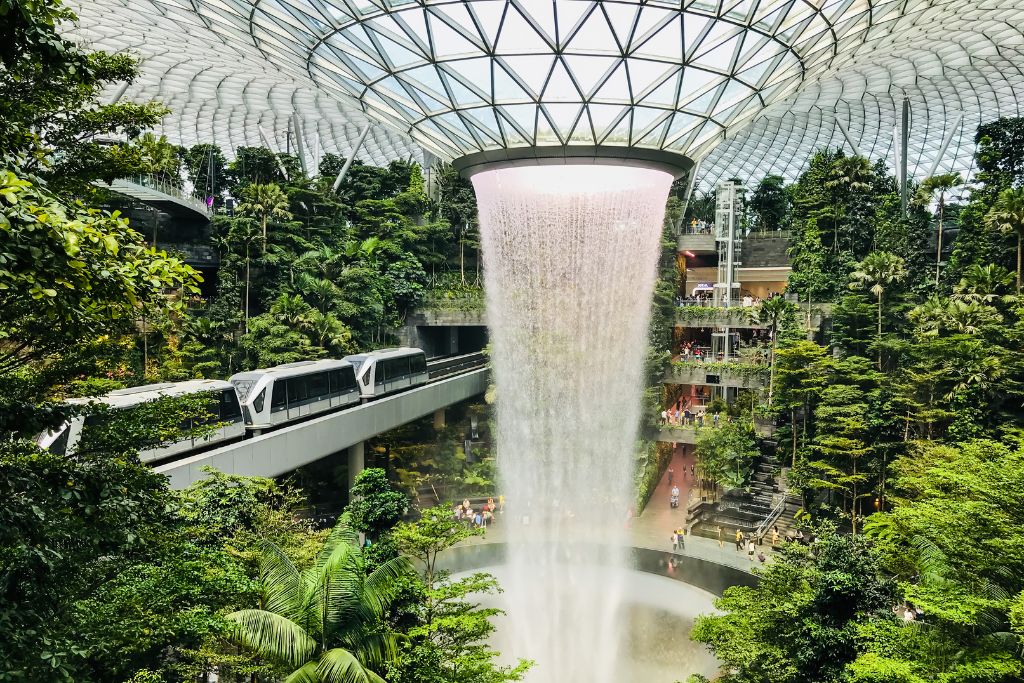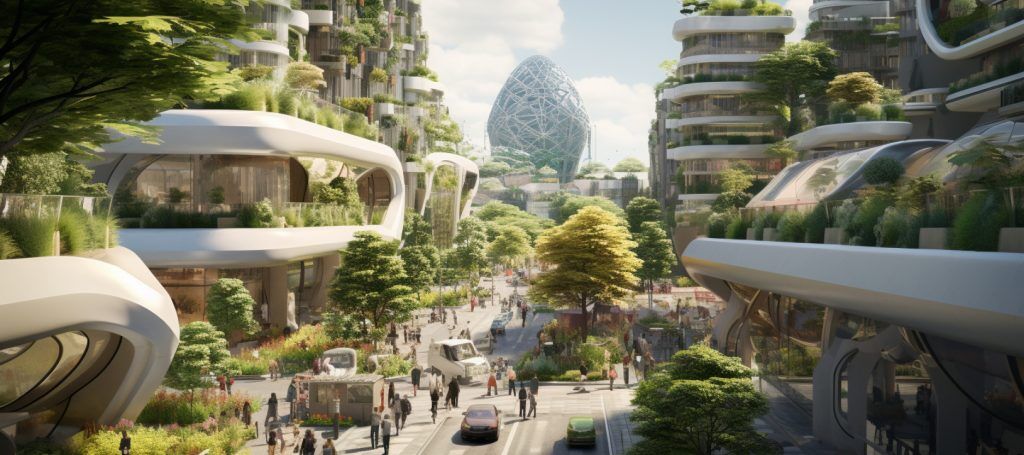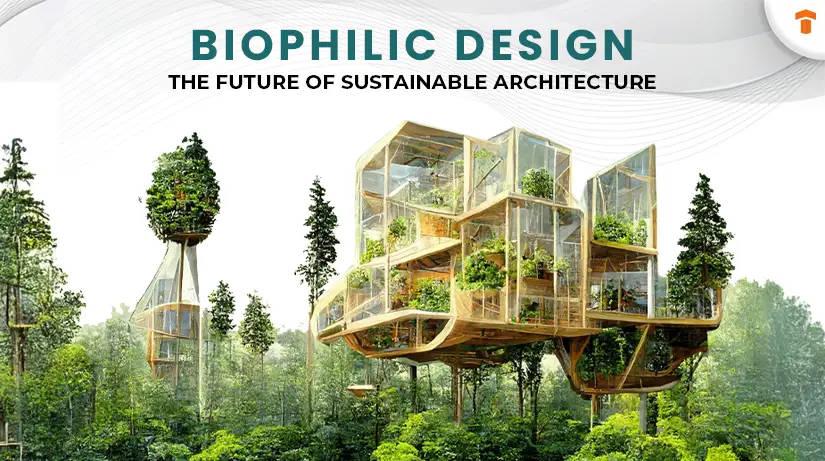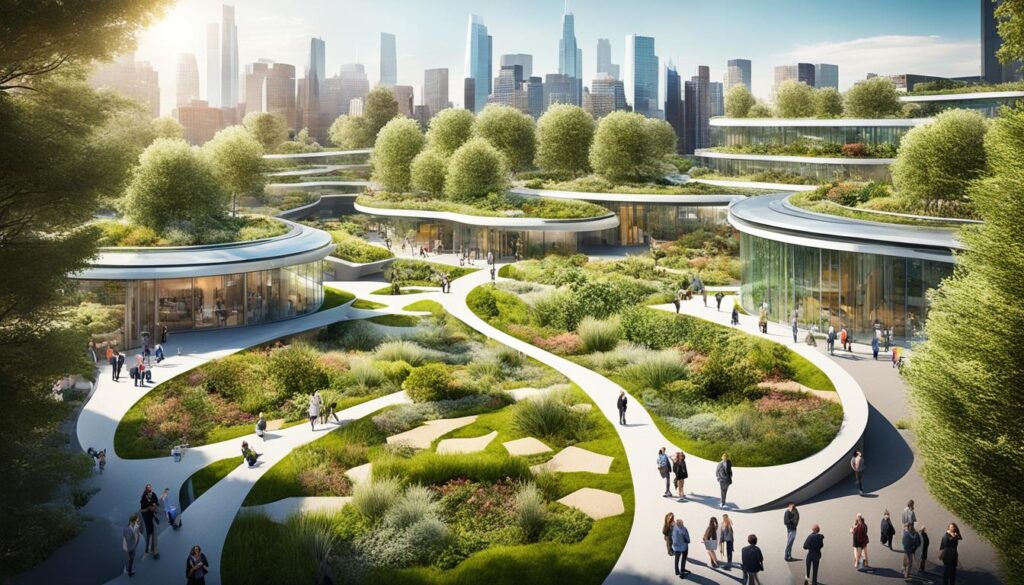The Synergy of Urban Farming and Biophilic Design: A Perfect Blend of Nature and City Life
Urban farming is fundamentally transforming urban landscapes by providing innovative solutions to food accessibility while fostering community connections.
This article examines the various forms of urban farming, its importance, and the numerous benefits it offers, including improved access to fresh produce and a diminished environmental footprint.
Additionally, we will explore the concept of biophilic design, focusing on how the integration of nature into urban environments can enhance mental health and creativity.
This discussion will reveal how these two concepts can synergistically contribute to the development of vibrant and sustainable cityscapes.
What Is Urban Farming?
Urban farming represents a transformative approach to food production that integrates agricultural practices within urban environments. This method promotes sustainable practices that enhance local food systems and foster community engagement.
Urban farming encompasses a variety of techniques, including community gardens, vertical gardens, and green roofs, which contribute to biodiversity and ecological design within cities.
As urban areas continue to expand and food deserts become increasingly common, urban farming emerges as a vital solution for food security and resilience. It enables cities to effectively utilize their existing spaces for agricultural purposes while simultaneously improving urban ecosystems.
What Are the Different Types of Urban Farming?
Urban farming encompasses a variety of methods tailored to meet diverse community needs and adapt to available spaces, including vertical gardens, community gardens, and greenhouses, each contributing uniquely to the urban landscape.
Vertical gardens effectively utilize limited space, while community gardens promote social interaction and enhance environmental psychology among participants. Greenhouses provide controlled environments for crop cultivation, thereby increasing food production within urban areas. Additionally, edible landscapes integrate horticulture into everyday urban settings, promoting organic farming practices and improving access to fresh produce.
These diverse approaches significantly enhance urban sustainability by reducing the carbon footprint associated with food transportation and promoting local biodiversity.
Vertical gardens, frequently found adorning the walls of city buildings, can improve air quality and provide habitats for various species. Active community engagement in gardening initiatives fosters a sense of ownership among urban residents, strengthening neighborhood ties and encouraging collective responsibility for the environment.
By incorporating these practices into urban planning, cities can evolve into greener, more resilient spaces that support the well-being of their residents and the vitality of local ecosystems.
Why Is Urban Farming Important?
Urban farming plays a crucial role in contemporary city planning by addressing food security, promoting environmental sustainability, and fostering community engagement, thereby enhancing the resilience of urban areas to climate change.
Integrating food production within cities minimizes reliance on distant food sources, while simultaneously enhancing urban biodiversity and encouraging ecological landscaping practices. Urban farming initiatives are integral to climate adaptation strategies, contributing to improved air quality and overall well-being for urban residents, while also connecting individuals to their food sources and natural ecosystems.
This dynamic practice encourages residents to actively engage in their communities, cultivating not only crops but also social connections and a collective sense of purpose. Urban farming has the potential to transform neglected spaces into vibrant gardens, which helps alleviate urban heat effects and provides habitats for various species, thereby increasing local biodiversity.
By incorporating permaculture principles, these initiatives can effectively manage resources, reduce waste, and improve soil health.
As cities confront the challenges posed by food deserts and environmental degradation, the significance of urban agriculture becomes increasingly vital in developing sustainable solutions that benefit both communities and the planet.
What Are the Benefits of Urban Farming?
Urban farming presents numerous advantages that significantly enhance community health, improve access to fresh produce, and promote sustainable practices within urban environments.
By establishing spaces for local food systems, urban farming not only supports food sovereignty but also facilitates the integration of nature into urban settings, thereby fostering ecological design and improving the overall quality of life.
Furthermore, it contributes to community resilience and social equity by creating opportunities for engagement and education related to sustainable agriculture and wellness.
1. Improved Access to Fresh Produce
One of the most significant benefits of urban farming is the enhanced access to fresh produce, particularly in areas designated as food deserts where residents have limited access to healthy food options. By establishing community gardens and urban plots, urban farming initiatives can provide fresh fruits and vegetables to local populations, thereby improving nutrition and food security.
This direct access to fresh produce enables communities to take control of their food sources and fosters healthier eating habits across diverse demographic groups.
These community gardens act as essential centers for education and engagement, promoting connections among residents as they learn about sustainable practices and nutrition. In neighborhoods where grocery stores are scarce, urban farms can mitigate the effects of food deserts by offering a consistent source of fresh produce, thus reducing reliance on processed food options.
By nurturing local food systems, urban farming initiatives not only uplift individual households but also enhance overall community well-being, leading to improved public health outcomes and a greater sense of agency regarding food choices.
2. Reduced Environmental Impact
Urban farming plays a critical role in reducing environmental impact by promoting sustainable practices that enhance ecological design and improve urban infrastructure. By employing methods such as organic farming, green roofs, and vertical gardens, these initiatives contribute to climate adaptation strategies that mitigate urban heat islands and enhance atmospheric quality.
This practice not only fosters biodiversity but also supports essential ecosystem services vital for urban resilience.
By integrating food production into urban landscapes, urban farming effectively transforms underutilized spaces into productive areas that sequester carbon and reduce runoff. The implementation of green infrastructure, such as permeable pavements and bioswales, complements these farms by managing stormwater and promoting groundwater recharge.
These advancements in ecological design are essential for creating habitats that support pollinators and other wildlife, while also enhancing community well-being.
As cities continue to expand, these sustainable farming practices will be instrumental in adapting to climate change, ensuring that urban residents benefit from cleaner air, access to fresh food, and thriving ecosystems in their surroundings.
3. Increased Community Engagement
Urban farming significantly enhances community engagement by offering opportunities for social interaction, collaboration, and participatory design among residents. These initiatives contribute to the creation of restorative environments that strengthen the human-nature connection, encouraging individuals to unite around collective agricultural efforts.
As communities cultivate shared spaces, they not only produce food but also reinforce social bonds, thus enhancing overall wellness and quality of life in urban areas.
By participating in projects such as community gardens and rooftop farms, residents gain access to fresh produce while acquiring valuable skills and forming supportive networks. For example, individuals involved in urban farming workshops often experience a heightened sense of belonging and purpose, which can have significant positive effects on their mental and emotional health.
These experiential learning opportunities cultivate a sense of ownership and pride in local environments, enableing individuals to take control of their communities’ food sources and nurturing both personal and communal well-being.
What Is Biophilic Design?
Biophilic design represents a progressive approach in architecture and urban development aimed at establishing a connection between individuals and nature, thereby enhancing overall well-being and quality of life.
This design philosophy integrates various natural elements, including natural light, green architecture, and living walls, into built environments, thereby promoting a robust human-nature relationship.
By incorporating nature into urban spaces, biophilic design not only cultivates restorative environments but also contributes to urban ecology and the sustainability of urban habitats.
How Does Biophilic Design Incorporate Urban Farming?
Biophilic design successfully incorporates urban farming by integrating green infrastructure and agricultural elements into the urban landscape, including vertical gardens and edible landscapes. This approach not only enhances the aesthetic appeal of urban areas but also contributes to increased biodiversity and improved air quality through the cultivation of native plants.
By combining biophilic design with urban farming initiatives, cities can create multifunctional spaces that promote food production while fostering a stronger connection between residents and their environment.
Innovative concepts such as rooftop gardens exemplify how urban settings can effectively transform underutilized areas into thriving ecosystems while producing fresh vegetables. The rise of community gardens not only provides residents with access to healthy produce but also serves as a focal point for social interaction and environmental education.
These initiatives significantly enhance the ecological footprint of cities, encouraging the flourishing of local wildlife while simultaneously engaging communities in sustainable practices. Ultimately, the integration of biophilic design with urban farming fosters a harmonious relationship that nurtures both the environment and the social fabric of urban life.
What Are the Benefits of Biophilic Design?
Biophilic design presents a range of advantages, including enhanced mental and physical health, improved environmental psychology, and increased urban resilience through the development of restorative environments.
By cultivating a stronger connection with nature, this design approach contributes to the well-being of individuals while promoting a more sustainable urban landscape.
The incorporation of natural elements into constructed environments has been associated with decreased stress levels, heightened productivity, and a strengthened sense of community among residents.
1. Improved Mental and Physical Health
One of the primary advantages of biophilic design is its positive impact on mental and physical health, which is often achieved through nature therapy and the integration of natural elements in urban environments. Research has demonstrated that exposure to nature can significantly reduce stress, enhance mood, and promote overall well-being, making biophilic environments essential for urban populations.
By creating spaces that encourage interaction with nature, cities can facilitate healthier lifestyles and improve the quality of life for their residents.
Studies indicate that even brief interactions with green spaces can lead to measurable improvements in heart rate and blood pressure, underscoring the importance of integrating nature within urban settings. For example, hospitals that feature gardens for patients frequently report faster recovery times and decreased levels of anxiety. Likewise, workplaces designed according to biophilic principles experience significant improvements in employee well-being and productivity.
This evidence highlights that the incorporation of natural elements is not merely a trend; rather, it represents a transformative approach that is vital for ensuring holistic wellness in increasingly urbanized environments.
2. Increased Productivity and Creativity
Biophilic design has demonstrated a positive impact on productivity and creativity across various environments, particularly in workplaces that incorporate elements of nature into their design. By integrating features such as natural light, vegetation, and outdoor spaces, employees benefit from enhanced focus and innovative thinking, which ultimately leads to improved job performance and satisfaction. This relationship between the environment and performance underscores the importance of biophilic design in urban planning and organizational contexts.
The inclusion of features such as living walls, water elements, and views of nature can further engage employees’ senses, fostering a deeper connection to their surroundings. Research has shown that employees working in biophilic-designed spaces report lower stress levels and improved overall well-being.
For example, a technology company that implemented large windows and green walls observed a 15% increase in creativity among its staff.
Such environments promote collaboration and the exchange of ideas, as individuals are naturally attracted to spaces that are vibrant and filled with life. This integration of nature not only benefits individual employees but also cultivates a culture of innovation within teams.
3. Enhanced Sustainability
Enhanced sustainability is a significant advantage of biophilic design, as it promotes green architecture and ecological design principles that minimize environmental impact. By integrating sustainable practices and natural systems into urban habitats, biophilic design supports biodiversity, improves air quality, and fosters resilience against climate change.
This approach not only creates aesthetically pleasing environments but also contributes to the long-term sustainability of urban ecosystems.
Incorporating elements such as green roofs, living walls, and natural ventilation systems further enhances the ecological benefits of urban spaces. By reintroducing nature into city landscapes, biophilic design encourages the development of habitats that support local wildlife and facilitate deeper community engagement with the environment.
This strategy not only mitigates the urban heat island effect and reduces energy consumption, but it also enables residents to reconnect with nature, thereby promoting mental well-being.
Ultimately, the implications of such design extend beyond mere aesthetics; they play a crucial role in creating resilient urban areas capable of adapting to the challenges posed by population growth and climate variability.
How Can Urban Farming and Biophilic Design Work Together?
Urban farming and biophilic design can effectively collaborate to establish vibrant green spaces within urban environments, thereby enhancing urban ecosystems and fostering a robust connection to nature.
By incorporating agricultural practices into biophilic design, cities have the potential to convert underutilized areas into productive landscapes that not only yield fresh produce but also promote biodiversity and encourage community engagement.
This synergistic approach reflects the principles of nature integration, advancing both wellness and ecological sustainability within urban settings.
1. Creating Green Spaces in Urban Areas
Creating green spaces in urban areas through urban farming initiatives is an effective strategy for enhancing the integration of nature and improving the quality of life for residents. By developing community gardens and urban plots, municipalities can transform barren landscapes into vibrant environments that promote outdoor living, social interaction, and ecological awareness.
These green spaces not only provide access to fresh produce but also serve as essential habitats for local fauna and flora, thereby enriching urban biodiversity.
Community gardens play a crucial role in fostering a sense of belonging and cooperation among residents, offering a platform for neighbors to engage in meaningful interactions and cultivate shared objectives. Such initiatives enable individuals by encouraging sustainable practices and fostering an appreciation for the natural environment.
As urban areas become increasingly densely populated, the implementation of green spaces can mitigate challenges such as air pollution and urban heat, thereby enhancing the resilience of cities to climate change. As these gardens thrive, they not only beautify neighborhoods but also educate the community on the importance of environmental stewardship and healthy living.
2. Incorporating Greenery in Building Design
Incorporating greenery into building design is a defining characteristic of both urban farming and biophilic design, as demonstrated by features such as living walls and green roofs. These architectural elements not only enhance aesthetic appeal but also contribute to ecological landscaping and improve air quality within urban environments.
By integrating urban farming technologies into building designs, cities can promote food production while simultaneously enhancing energy efficiency and biodiversity.
Living walls function as vertical gardens, providing insulation benefits that lower energy costs and filter air pollutants. Conversely, green roofs create habitats for local wildlife and play a significant role in managing stormwater runoff, thereby reducing the risk of urban flooding.
When cities implement these innovative approaches, they foster a healthier living environment and encourage residents to engage directly with food sources. This symbiotic relationship between nature and urban infrastructure promotes a sustainable future while enhancing the overall quality of life in metropolitan areas.
3. Utilizing Urban Farming Techniques in Biophilic Design
Utilizing urban farming techniques within the framework of biophilic design significantly enhances food production capabilities in urban environments while simultaneously promoting biodiversity through the cultivation of native plants and the establishment of microclimates.
By integrating these methodologies into the design of urban spaces, cities can foster more resilient ecosystems that support local food systems while enhancing the overall aesthetic and functional value of the environment. This approach effectively connects residents to their food sources and encourages sustainable practices in urban living.
By incorporating rooftop gardens, vertical farms, and community greenhouses, urban areas can transform underutilized spaces into productive landscapes that yield fresh produce. The integration of water features and pollinator-friendly plants is instrumental in attracting essential wildlife, thereby contributing to a balanced urban ecosystem.
For example, implementing edible landscapes in public parks not only provides communities with access to fresh fruits and vegetables but also serves to educate the public on the importance of biodiversity.
Such strategies not only enhance the quality of life for residents but also reflect a commitment to environmental stewardship, ultimately fostering a thriving and conscientious urban population.
Examples of Successful Urban Farming and Biophilic Design Integration
Numerous successful examples illustrate the integration of urban farming and biophilic design to establish thriving ecosystems within urban environments. These projects highlight the potential of green infrastructure to enhance community engagement, food production, and ecological sustainability.
Initiatives such as rooftop gardens that yield fresh produce and community spaces designed with restorative environments in mind exemplify the numerous benefits of harmonizing agricultural practices with urban design principles.
One notable case is the GrowNYC initiative in New York City, which has transformed underutilized areas into vibrant green spaces that enhance access to fresh food for residents. This program not only improves access to healthy, locally sourced produce but also fosters a sense of community by encouraging resident participation in urban gardening workshops and farmers’ markets.
Similarly, the Bosco Verticale in Milan serves as an architectural exemplar that incorporates living walls filled with vegetation, promoting biodiversity while providing food resources to adjacent neighborhoods.
Such examples clearly demonstrate how the integration of urban farming with biophilic design can revitalize communities, support sustainable practices, and contribute to the development of healthier urban ecosystems.
Frequently Asked Questions
1. What is the concept of urban farming and biophilic design?
Urban farming and biophilic design are two concepts that aim to integrate nature into urban environments. Urban farming involves growing food and plants in cities, while biophilic design focuses on incorporating natural elements into the design of buildings and urban spaces.
2. Why is urban farming and biophilic design important?
Urban farming and biophilic design have numerous benefits, such as increasing access to fresh produce, improving air and water quality, reducing the urban heat island effect, and promoting overall well-being and mental health.
3. How can I incorporate urban farming into my city apartment?
Even if you live in a small city apartment, there are still ways to incorporate urban farming. You can start a small indoor herb garden, use vertical gardening techniques, or join a community garden in your neighborhood.
4. What are some examples of biophilic design in urban spaces?
Examples of biophilic design in urban spaces include green rooftops, living walls, and urban parks. These features not only provide visual appeal but also support biodiversity and promote a connection to nature.
5. How can biophilic design be incorporated into urban planning?
Biophilic design can be incorporated into urban planning by prioritizing green spaces, creating walkable neighborhoods, and incorporating natural elements into building facades and public spaces. It can also involve preserving existing natural areas and integrating them into the urban landscape.
6. What are some challenges of implementing urban farming and biophilic design in cities?
Some challenges of implementing urban farming and biophilic design in cities include limited space, conflicting regulations and policies, and lack of funding and community support. However, these challenges can be overcome with creative solutions and collaboration among stakeholders.

I’m Bruno, an architect with a deep passion for Biophilic Design in Urban Architecture. Throughout my career, I’ve focused on integrating natural elements into urban planning, and I created this site to share my insights and foster a deeper understanding of how biophilic principles can significantly enhance urban living. Dedicated to sustainable development, I continually explore innovative design solutions that promote both environmental and human well-being in city landscapes.














Publicar comentário